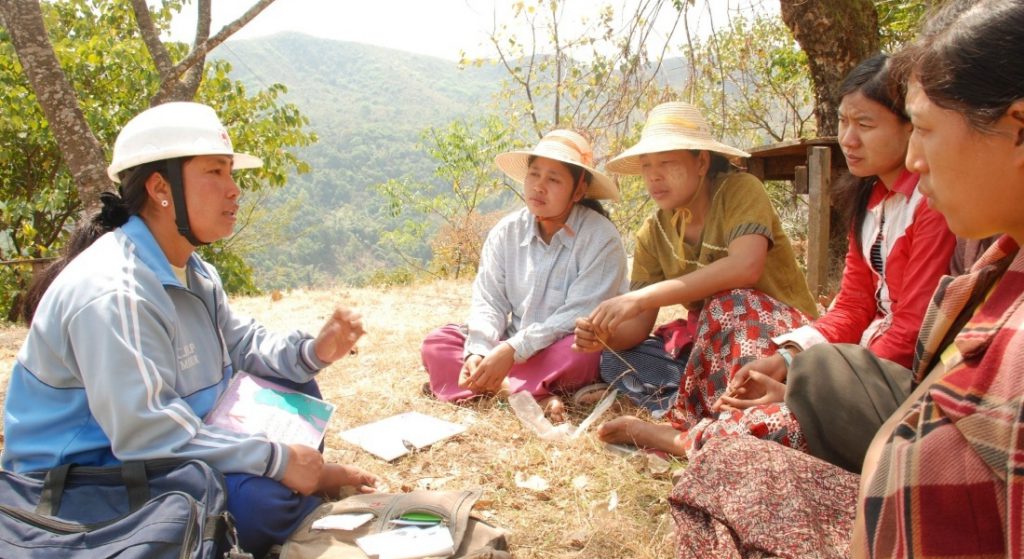
Although it is just past noon, the temperatures are not too high here at 3,000 feet above sea level. Mist covers the mountain range in the distance, while mine workers gather under the trees to listen.
The generators and marble grinders make lots of noise, but the mineworkers are used to the sounds and focus in on the words of the Myanmar Red Cross Society (MRCS) volunteer.
What can be heard is all about HIV and how to prevent it. Whereas the demonstration of the correct
use of condoms results in the usual giggles, eventually the more serious questions are asked. The volunteers are focused too, they have limited time as they are only allowed inside the mine during lunch time.
Further south, in the historic city of Mandalay, a similar session takes place. Here the audience includes truck drivers, their helpers and adolescents working in the bus and truck station area. This represents a group of men potentially at risk of sexually transmitted diseases.
Quick awareness
These two training sessions are examples of Myanmar Red Cross activities being carried out in parts of the country not affected by Cyclone Nargis, away from the Ayeyarwady delta. From the first days after the cyclone struck and the scale of the devastation was clear, all of those involved in relief and recovery have been aware that the enormous operation should ideally strengthen the Myanmar Red Cross in the long run, rather than weaken it.
Everyone also knows that this is sometimes easier said than done, but being aware of the challenge has already helped tremendously.
The Myanmar Red Cross Society has for years been involved in health education, first aid training, malaria and TB awareness and HIV prevention. These activities have continued in the wake of cyclone Nargis, supported by a number of Red Cross and Red Crescent National Societies, two
of which work directly with MRCS.
Myanmar Red Cross also continues to contribute to the national blood donor recruitment program.
Planning for transiti
